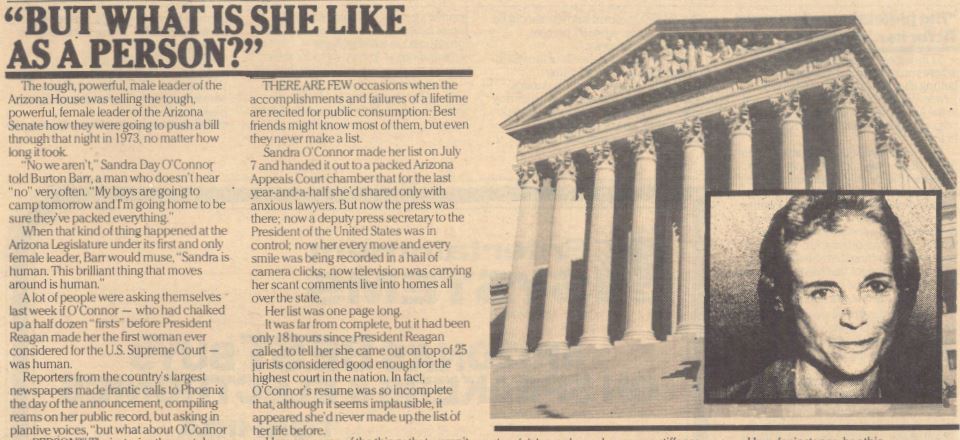A landmark for the court
From all accounts, President Reagan picked a winner and made history as well by selecting. Sandra O’Connor to fill the vacancy on the· Supreme Court.
The highest court in the land has been an, all-male bastion for much too long, and we’re! happy to see Reagan breach the wall. It’s a signal, honor for the Arizona jurist and a long-overdue· recognition of the fact that in law, as in other ‘fields, women have come into their own.
But Judge O’Connor promises to bring to the court more than a history-making label. She was, a top student at Stanford Law School, a respected lawyer in Arizona and the Republican majority leader of the State Senate before being named to an appellate court-by a Democratic governor.
People familiar with Judge O’Connor’s work on the bench give her high marks on all counts-grasp of the law, judicial temperament and clear, cogently written opinions.
The chorus of approval is not unanimous. The Right to Life Committee and the Moral Majority already have protested what they regard as Judge O’Connor’s “pro-abortion” leanings. What that means, we suspect, is that as a private citizen the judge doesn’t share their particular views on abortion.
But her entire record argues that she would not on the bench let her personal views intrude on her judicial actions. Apparently, she does not subscribe to the old Earl Warren philosophy of the Supreme Court’s right to invade every nook and cranny of American life.
In this sense, Mrs. O’Connor is judicially nonpartisan





